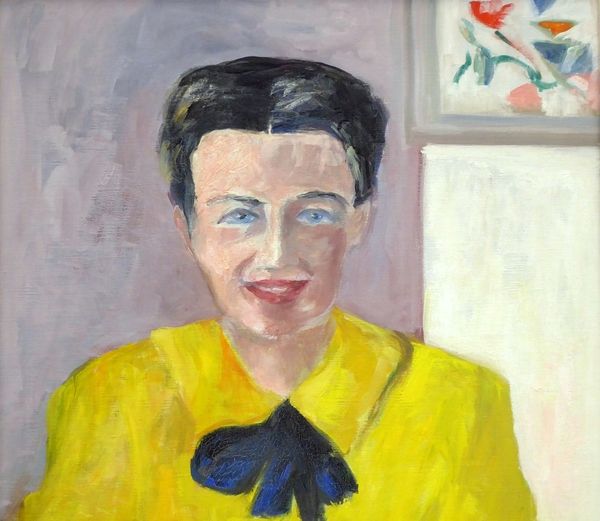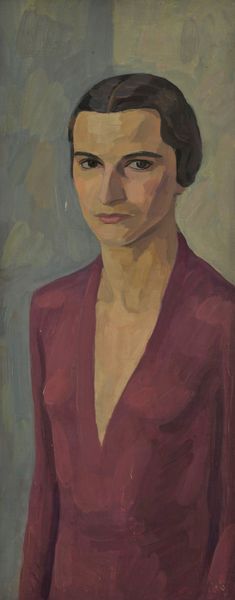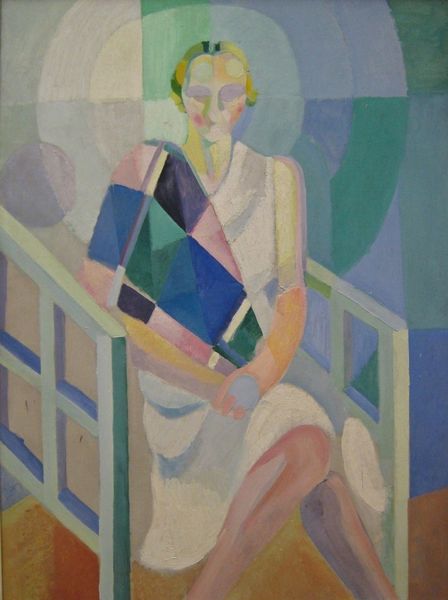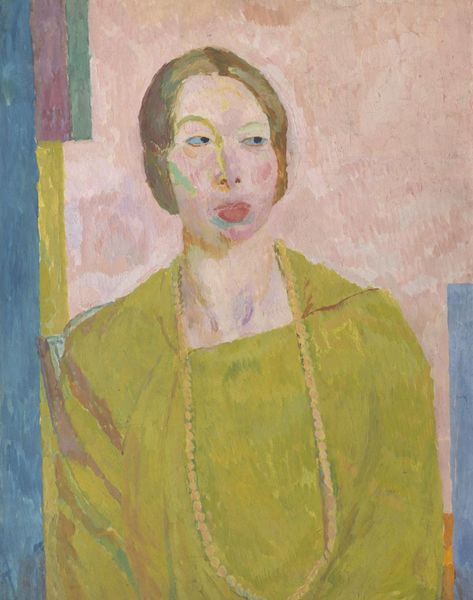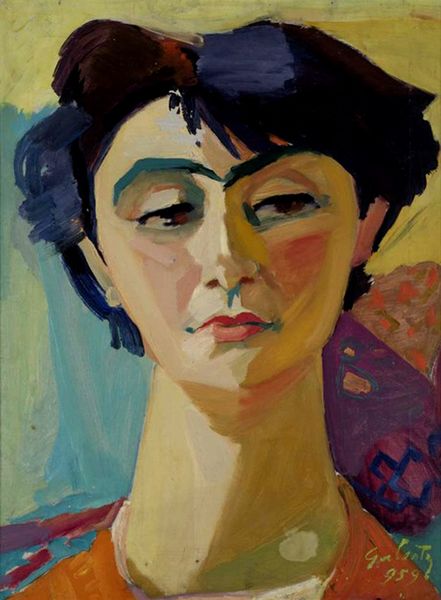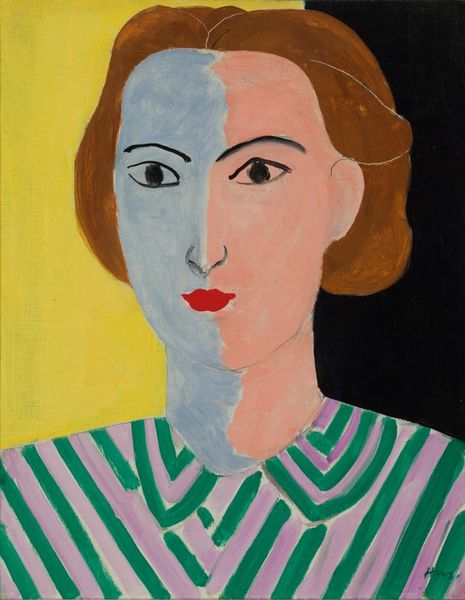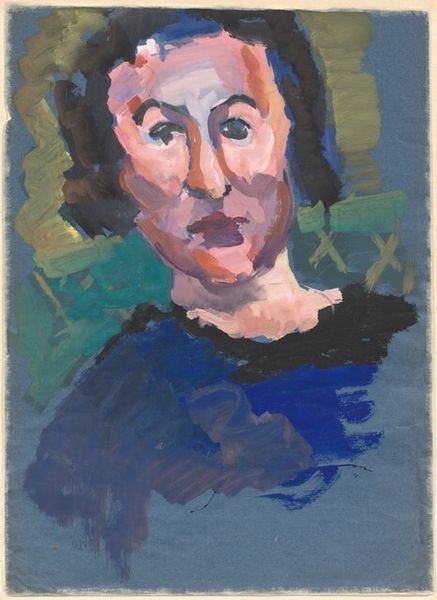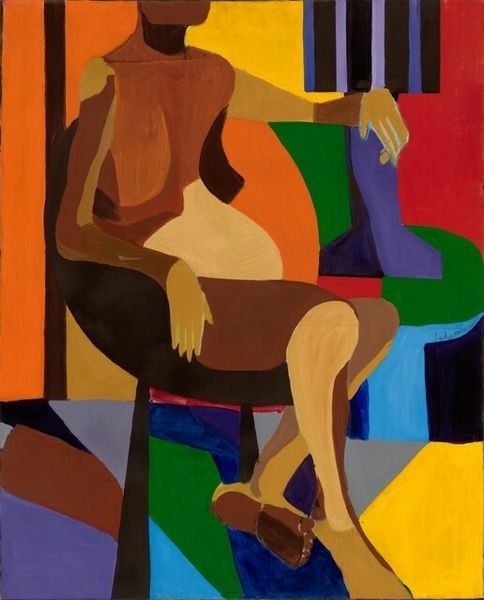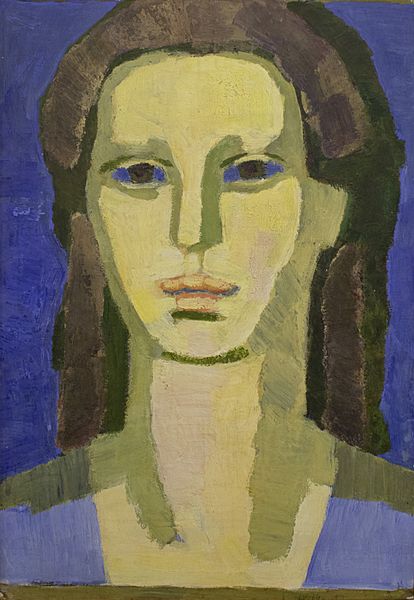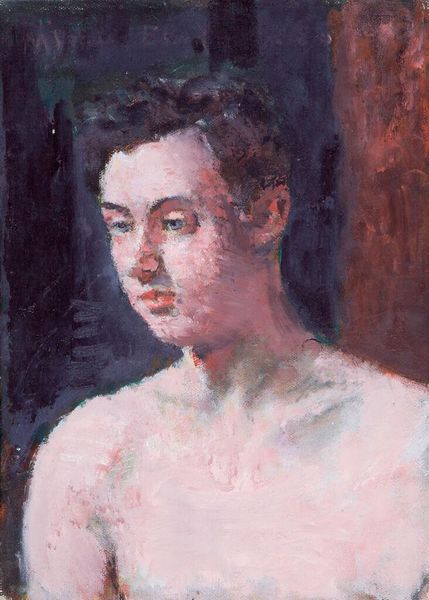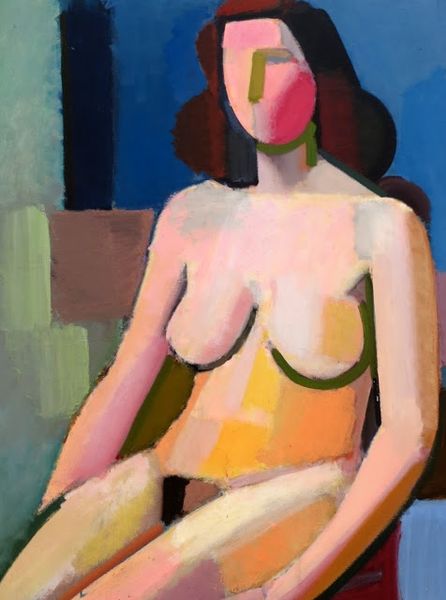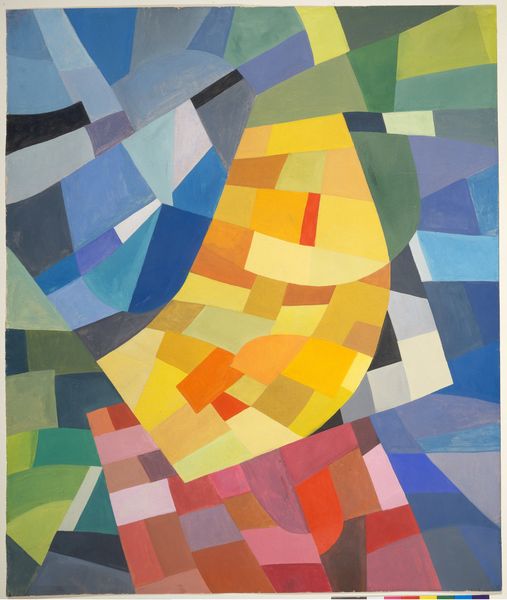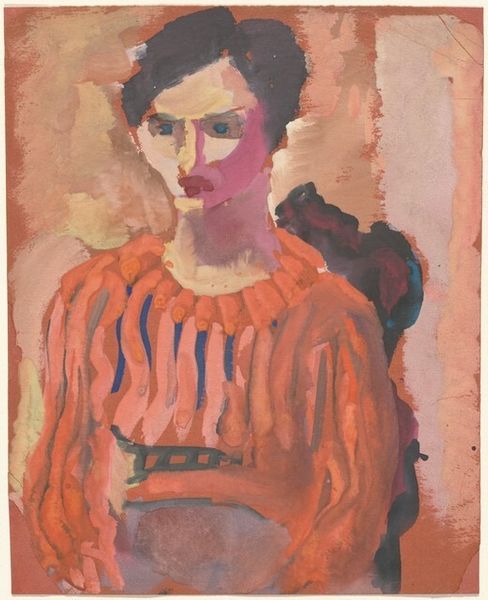
painting, oil-paint
#
portrait
#
self-portrait
#
painting
#
oil-paint
#
oil painting
#
geometric
#
portrait art
#
modernism
Copyright: Hélène de Beauvoir,Fair Use
Curator: This is "Self Portrait" by Hélène de Beauvoir, painted in 1955. De Beauvoir, the sister of Simone, also explored social dynamics and identity in her art, primarily focusing on intimate domestic scenes and portraits. What are your initial thoughts on this piece? Editor: There's a striking calmness in the geometric fragmentation, almost like a stained glass window reflecting on the subject. The colors are muted, yet the overall effect is surprisingly serene and confident. Curator: It’s fascinating how she renders herself through these geometric planes. You have to remember this was a period deeply shaped by post-war existentialism. There’s this sense that identity is fractured, pieced together, rather than being a singular, coherent whole. Editor: Exactly, the geometric shapes might be visual metaphors for different facets of her identity. Also, look at how she positions herself. Centered, but the soft, almost faded palette and geometric pattern create this visual impression that it’s ok to be both vulnerable and have a tough veneer. What symbols or meanings might be interwoven in this particular portrait? Curator: Well, given her intellectual and social circles, she likely engages with themes of female subjectivity. De Beauvoir was actively critiquing traditional notions of womanhood in her art and pushing against societal expectations. She shows herself not as a traditional muse but as a thinking, self-aware individual. Editor: The way she simplifies and abstracts her face creates a rather enigmatic presence. Although her identity is known through title of the piece, there's a slight distance to it. Is there a meaning hidden? Curator: Yes. There is an idea here about self-perception versus the externally imposed definitions of womanhood during the period, a subtle feminist stance that invites viewers to see beyond surface appearances and engage with a deeper understanding of the artist’s experience and consciousness. Editor: Ultimately, this piece demonstrates her inner reflections through an incredibly simple, yet poignant use of forms and colour, right? Curator: Precisely. De Beauvoir offers a unique lens into mid-century female intellectual life, portraying herself not as a singular, fixed identity, but as a dynamic collection of experiences, ideologies, and self-awareness. Editor: It is an intriguing self-representation, laden with hidden depths just beneath its geometrical surface.
Comments
No comments
Be the first to comment and join the conversation on the ultimate creative platform.
